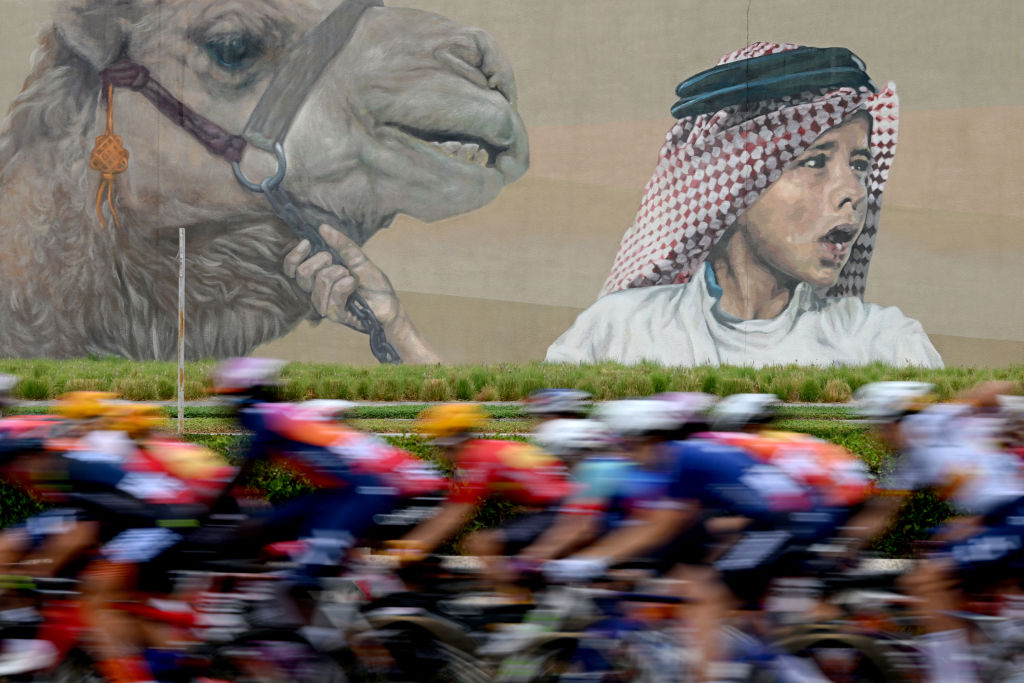
Women’s cycling is in rapid development and the second edition of the UAE Tour Women, run by Giro d’Italia organisers RCS Sport on behalf of the Abu Dhabi Sports Council, is clear proof of that.
Billed as “the one and only UCI Women’s WorldTour race in the Middle East”, the UAE Tour is a major race, with lots of local staff and Europeans flown in to ensure the women's and then next week's men’s race are well organised.
Speaking to Cyclingnews at the stage 3 start in Al Ain, race director Fabrizio D’Amico broke down the numbers.
“We have around 100 to 150 people coming across from Europe for the race organisation, that number includes the TV production company, NEP from the Netherlands. Then we have around 50 local managers plus another 150-200 marshals for the race,” D’Amico reveals.
On top of this comes a large police presence. Each of the seven emirates has its own police force, so the outriders and traffic regulators change from day to day depending on where the stage is held as each local force takes great pride in escorting the race.
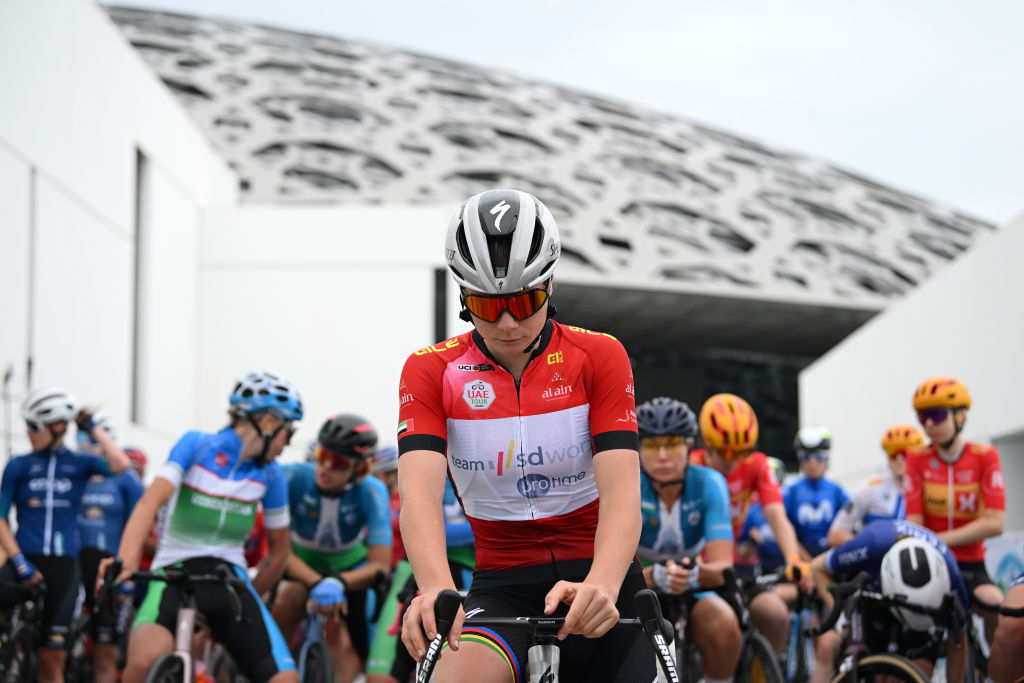
On stage 3, the Al Ain branch of the Abu Dhabi Police turned out at the start in their special uniforms, and the Abu Dhabi Police Musical Band played both at the start and atop the Jebel Hafeet.
This amount of people need to transport to get around, with transfers between the race hotels in Abu Dhabi and the stage starts and finishes taking up to two hours each way. And since the race is held away from Europe, teams don’t bring over their own vehicles.
“For each team, we have one team car plus two vans, one nine-seater plus a one-panel van to transport the equipment. The race organisation has around 70 vehicles inside the race convoy, plus another 50, 55 around the race,” explains D’Amico.
This totals up to almost 200 vehicles, from motorbikes to vans, making the vehicle sponsorship a crucial piece of the puzzle.
The special circumstances also create an almost-level playing field as each team, from the biggest women’s WorldTour outfits to the smallest continental teams have the same number and type of vehicles.
There are still differences, though – while the WorldTour teams brought two complete bikes for each rider, some of the smaller teams only came with one spare bike to share and a number of spare wheels.
The race venues
The three largest cities of the UAE - Dubai, Abu Dhabi, and Al Ain - hosted one stage each of the UAE Tour Women, the remaining stage being held in the Western desert between the small port town of Al Mirfa and the regional centre of Madinat Zayed.
Dubai is famous for its artificial islands like Palm Jumeirah and Palm Jebel Ali visible from space and the Burj Khalifa standing as the world’s tallest building.
The Dubai Miracle Garden, where stage 1 started has some local inspiration with roses and statues of peacocks but the larger part of the venue is given over to a European-style castle and a big topiary arrangement depicting Dumbo the Elephant, to name just two.
The topiary of two rearing horses at the main entrance, depicting the Arab passion for horse racing, cannot mask the fact that this is a Disneyland-like place with Western attractions. The target audience is a mix of Emiratis who consider these Western trappings of wealth to be prestige symbols and Westerners whose tourism money the region desperately wants to attract.
Abu Dhabi, while also a massive urban sprawl, still comes across as being on a somewhat more human scale than Dubai – or it does until the Sheikh Zayed Grand Mosque comes into view. There are plenty of skyscrapers in Abu Dhabi’s central business district as well, but it feels a tiny bit less over-the-top than Dubai.
That said, the UAE capital has attracted its fair share of ‘transplanted’ Western-style developments, from the Yas Marina F1 circuit to a branch of the Louvre or the Sorbonne University. The fact that the city sits on several islands, some of which still host mangrove forests, makes it feel less artificial than Dubai.
Al Ain, grown out of an important oasis town, is definitely the one of the UAE’s three main cities that feels the most ‘real’. To be fair, the stage started in the centre of the city and not at some recent development that the local organisers want to highlight.
But even with that in mind, the crowd that turned out to see off the peloton was not only bigger than at the start in Dubai, but more enthusiastic as well and actually there to see the race.
The strict ban on buildings more than six stories high also plays its part. Finally, while car is still king, bikes are used as an everyday form of transport in Al Ain, with at least some people getting around on sturdy mountain bikes.
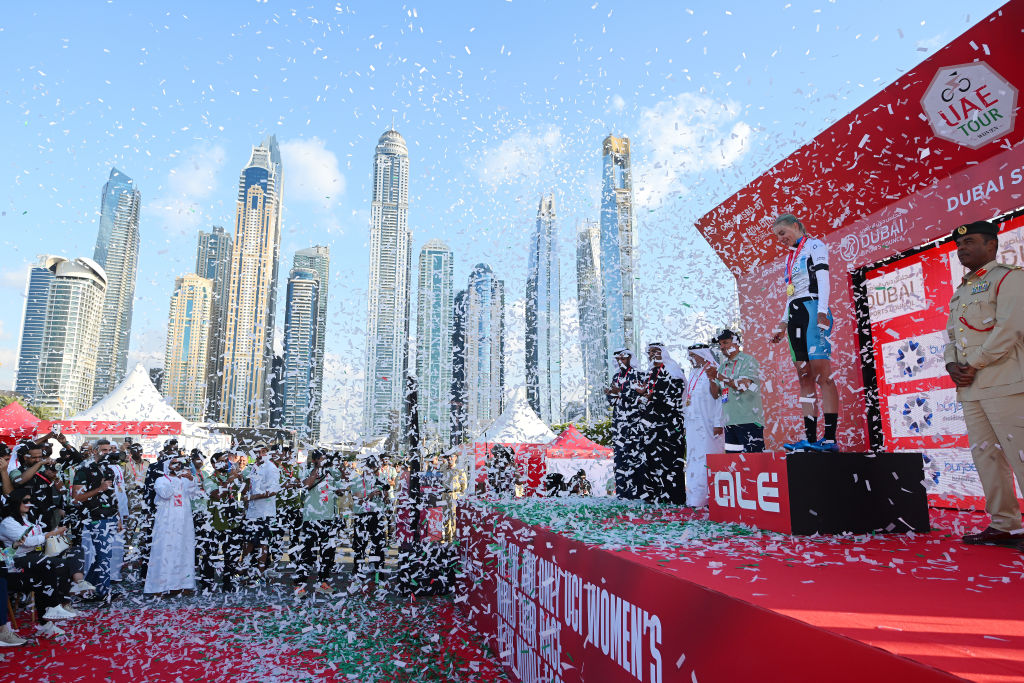
The mountaintop finish on Jebel Hafeet was a very pleasurable experience for the riders and everyone else on the race.
For one, it was a bit cooler at over 1,000 metres of elevation than it was down in Al Ain, and there was a cooling breeze as well.
The road up the mountain was created in the 1980s. With two lanes going up, one lane going down, and hard shoulders on both sides, it would almost pass for a motorway in most European countries.
The whole mountain is protected as a national park, and the view from the top is spectacular, overlooking Al Ain, the surrounding desert, the impressive rock formations at the foot of the mountain, and Oman’s Hajar Mountains in the distance. When the race was finished, there was a near-constant flow of local cars and motorbikes going up the mountain, presumably to watch the stunning sunset.
The stages are designed collaboratively by RCS Sport and the Abu Dhabi Sports Council, both trying to change and improve the formula a little bit every year.
“As the race director, I sit down with His Excellency, Mr Aref Al Awani [general secretary of the Abu Dhabi Sports Council, ed.], and we start to plan for the next year," D’Amico says.
"We decide to go to new places every year, so it is a combination of forces that comes together. It also really depends on the municipalities, what they want to promote and what we want to promote.”
The men’s seven-day UAE Tour and its predecessors, the Abu Dhabi Tour and Dubai Tour, have had stage finishes at the Hatta Dam and atop Jebel Jais, the highest mountain in the UAE.
D’Amico said that stages in the mountainous northeast of the Emirates weren’t on the table at the moment, but he was open to including them in the future.
“For the women, it’s a four-day race, and that is quite different. We also need to limit the transfers; they will become too long if we keep only one headquarters. If we add more days to the race, it can work for sure, and it then depends on who really want to host us."
Money, money, money
The UAE has a lot of money to spend. And the standard of the race accommodation or start and finish ‘villages’ is top-notch, with rider changing rooms making a welcome change from having to put on race kit in the back of a small van.
The portable toilets were equipped with porcelain wash basins, and there were big VIP tents at the finish lines where sponsors, local dignitaries, and other VIPs were wined – well, fruit-juiced – and dined.
Of course, all of this comes at a cost.
It is important not to forget that all of the UAE development is fuelled by petrodollars – the country got rich through primary resource extraction and is only now divesting into other fields of business, tourism and sport.
The money in the region has led to a unique population, with the share of non-citizens at almost 90%. While this is not a reflection of the staff of the organization that runs this cycling event, there are hundreds of thousands of expats from Western countries within the region, but the vast majority are migrant workers from India, Pakistan, Bangladesh, other Middle Eastern, or African countries, who mainly do the menial jobs and really keep the country running behind the polished facade.
At the end of the day, the UAE is still an authoritarian state where the emir of Abu Dhabi is automatically the country’s president and the emir of Dubai serves as prime minister. Such a streamlined structure makes it easy to push through large investments, including into professional cycling but also limits democracy.
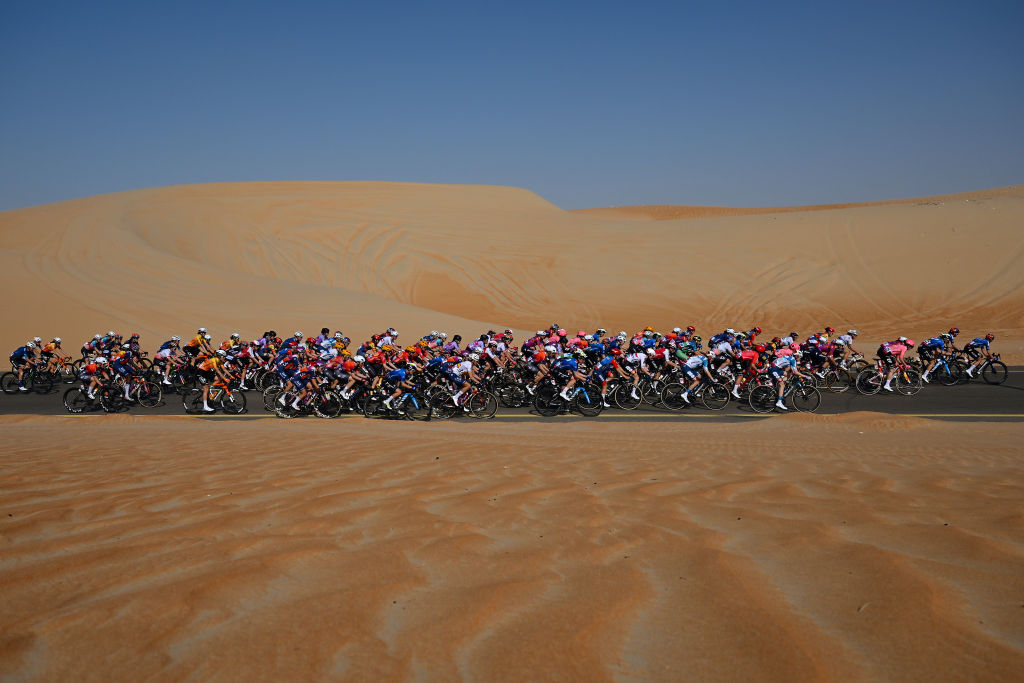
“The numbers are confidential, as you might expect, but for the teams, we cover the hotel accommodation from two days before the event, we provide the vehicles, and we give them a reimbursement to pay all their flight tickets, and part of it will stay as our endorsement fee," D’Amico says.
"We provide everything they need. In terms of prize money, it is aligned with the men's race, which was very important for me and for all of us to keep the standard the same as the men’s race.”
The UCI’s regulations require WWT stage race organisers to provide team accommodation and pay a 2,000€ start fee to each team.
Cyclingnews understands that the UAE Tour Women pays 11,000€ per team; however, this apparently doesn’t cover the full costs of travelling to the Middle East with bikes and other equipment.
A sporting niche in the calendar
The UAE Tour Women has found its niche and date on the women's WorldTour calendar in February.
It offers almost constant wind and, therefore, a high probability of echelon action and all-out racing, as was seen in 2023. Should the wind blow from the 'wrong' direction or not at all, as was mostly the case this year, the race is still a good opportunity to fine-tune the lead-out trains and figure out tactics for sprint stages.
After all, it did take the other teams until stage 4 to let SD Worx-ProTime do the chase work. Being ready to lose the chance to sprint for the stage win is exactly the right move when you are up against Wiebes and her team, and it is heartening to see teams finally wisen up to it.
Last but absolutely not least, the climb to Jebel Hafeet is a serious climbing test this early in the season. In fact, it is among the longest and hardest climbs the women’s peloton faces all year.
In both editions of the UAE Tour Women, it has inspired stand-out performances by young riders like Gaia Realini (Lidl-Trek), Neve Bradbury (Canyon-SRAM), or Marion Bunel (St Michel-Mavic-Auber 93). They showed off their climbing prowess in a race just one rung below the biggest stage in women’s cycling.
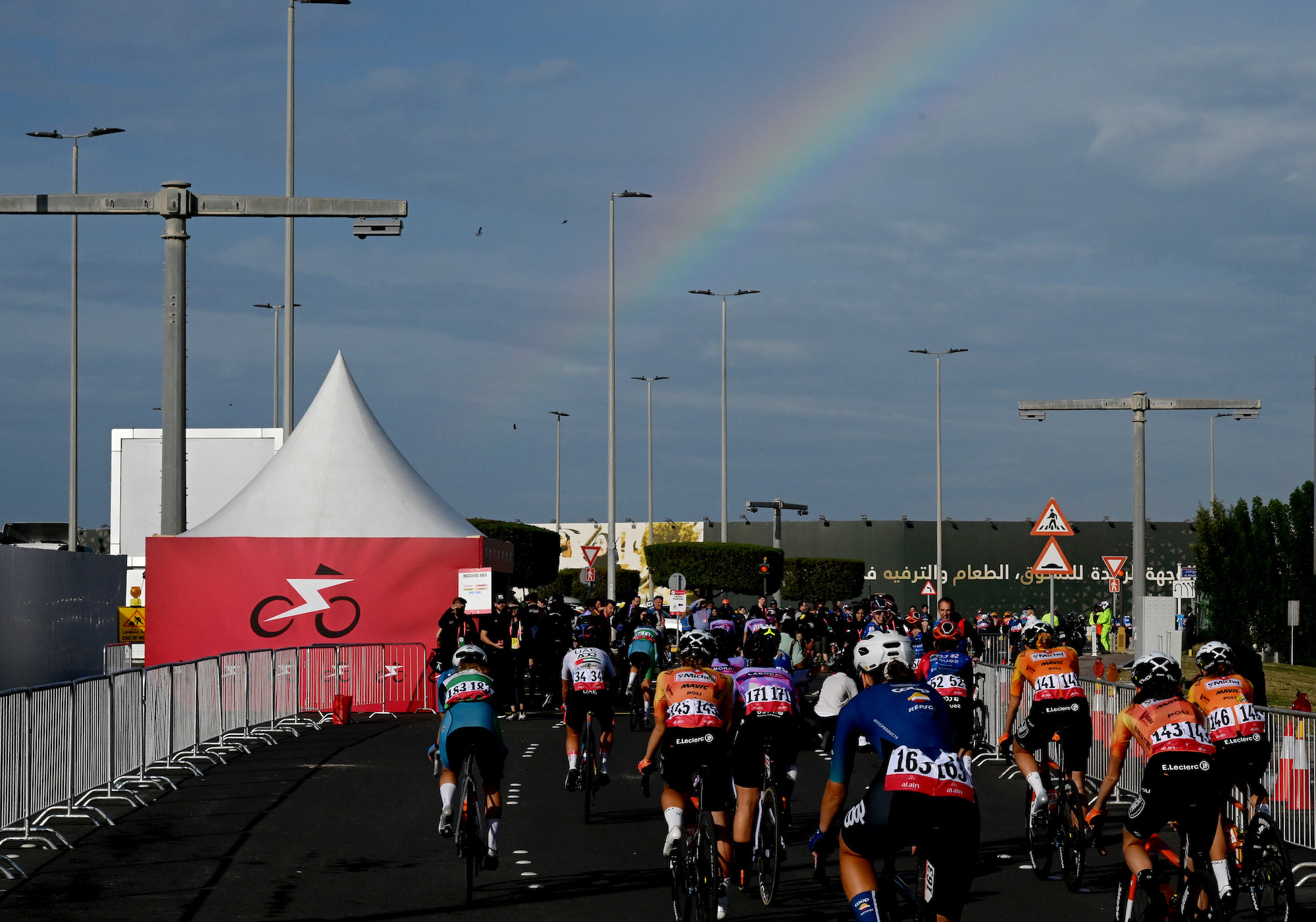
The men’s UAE Tour sometimes includes an individual time trial, held on the Hudayriyat cycling circuit, and this could be an interesting addition to the women’s race as well, especially if it is put after the mountain stage (whether on the Jebel Hafeet or another climb), giving the time trial specialists a chance to claw back some time on the sprinters. Putting the ITT before the mountain stage would run the risk of neutralising the climb as the time trialists only need to hang on and limit their losses.
In the men’s peloton and in the Middle East, the creation of the Tour of Qatar was followed by the Tour of Oman, the Abu Dhabi Tour and Dubai Tour – now merged as the UAE Tour – and most recently, the Tour of Saudi Arabia, renamed the AlUla Tour for 2024. Oman and AlUla both feature more varied terrain with hilly stages. The Bahrain Victorious, UAE Team Emirates and UAE Team ADQ squads followed.
From a purely sporting perspective, women's cycling has huge potential. If Oman or AlUla added women’s races, it would give the women what the men already have: more racing and more visibility, in the Middle East and globally.







